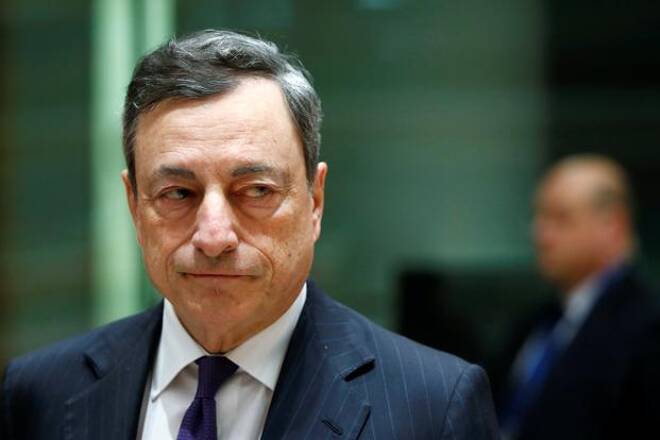Advertisement
Advertisement
Draghi to Leave ECB in October Without Rate Hike
By:
With the Euro Zone economy still facing a mountain of issues including trade tensions, European factors and weakening manufacturing PMIs, the ECB will likely have to wait until mid-year before revisiting the rate hike issue again, but the window of opportunity is closing fast. Furthermore, all the major issues would have to be cleared up before the economy would be impacted positively.
In Thursday’s press conference after the European Central Bank’s interest rate and monetary policy announcements, ECB President Mario Draghi likely assured that he would end his tenure in October without an interest rate hike. As Bloomberg New put it, “The window for Mario Draghi to raise interest rates is about to slam shut.”
The ECB took no action on Thursday as widely expected, but Draghi warned that growth risks in the Euro Zone had shifted to the downside due to a number of external factors.
“The risks surrounding the Euro area growth outlook have moved to the downside on account of the persistence of uncertainties related to geopolitical factors and the threat of protectionism, vulnerabilities in emerging markets and financial market volatility,” Draghi said at a press conference.
At no surprise to investors, Draghi also reaffirmed the central bank’s stance to keep key interest rates at their present levels through the summer of 2019 and “longer, if necessary.” Draghi essentially acknowledged that near-term data are likely to be weaker-than-expected.
The market’s reaction to the Draghi comments indicate that investors were spot on with their assessment of the Euro Zone economy and future ECB policy. Investor didn’t change their pre-ECB/Draghi announcements, pricing in a 10 basis-point move priced in for June 2000 and 15 basis points for September 2020. Furthermore, economists, who have held their forecasts steady, are becoming more bearish.
Now that Draghi has acknowledged the weakness in the economy, he joins the ranks of the U.S. Federal Reserve, which has already suggested it could slow the pace of rate hikes this year. Earlier this week, the Bank of Japan lowered its inflation forecast on Wednesday. Furthermore, the People’s Bank of China is also expected to further ease monetary policy in 2019 as part of its newly proposed stimulus package as China’s economy faces a deepening slowdown amid the on-going trade dispute with the United States.
With the Euro Zone economy still facing a mountain of issues including trade tensions, European factors and weakening manufacturing PMIs, the ECB will likely have to wait until mid-year before revisiting the rate hike issue again, but the window of opportunity is closing fast. Furthermore, all the major issues would have to be cleared up before the economy would be impacted positively.
Maeva Cousin, David Powell and Jamie Murray from Bloomberg Economics said on Thursday, “Risks to the outlook are now tilted to the downside. This confirms that the first rate hike is unlikely to come before December and that the ECB’s forecast will be lowered in March.”
Although Draghi denied that the ECB has run out of options to stimulate the economy, the fact that he’s even talking about ways the central bank can help promote growth this far in the recovery cycle strongly suggests that he will leave office in October without generating enough economic growth to produce a rate hike.
About the Author
James Hyerczykauthor
James Hyerczyk is a U.S. based seasoned technical analyst and educator with over 40 years of experience in market analysis and trading, specializing in chart patterns and price movement. He is the author of two books on technical analysis and has a background in both futures and stock markets.
Advertisement
